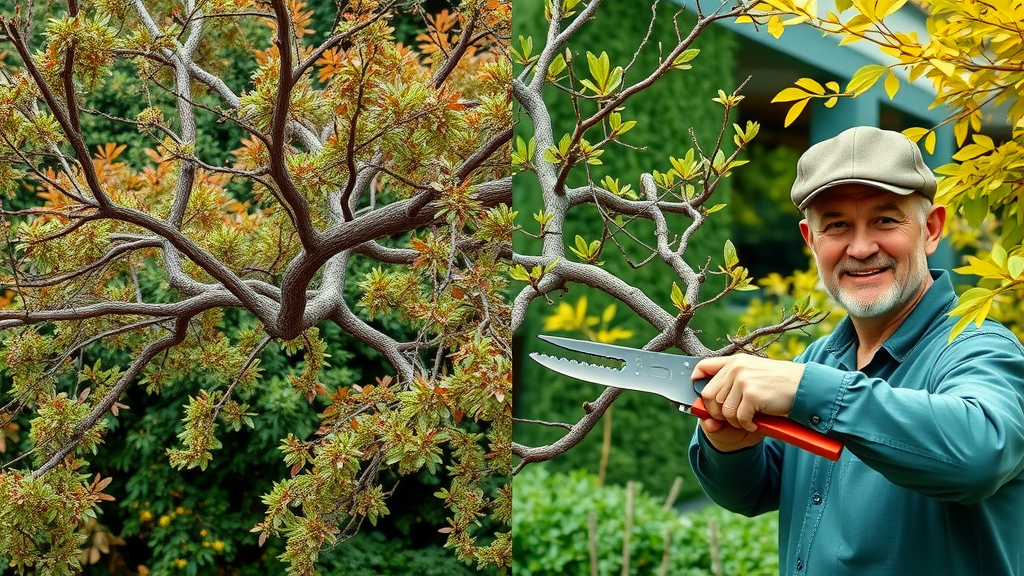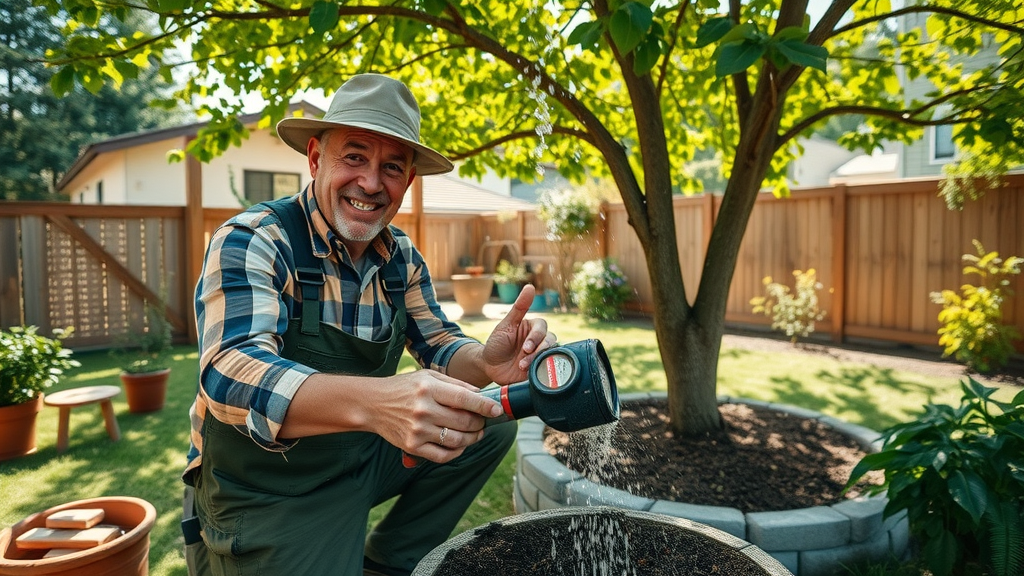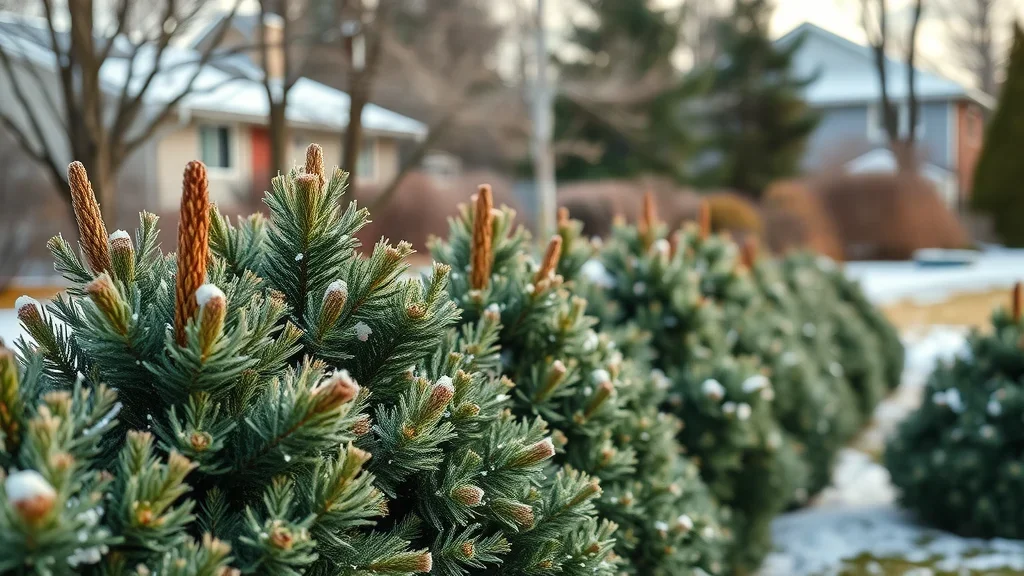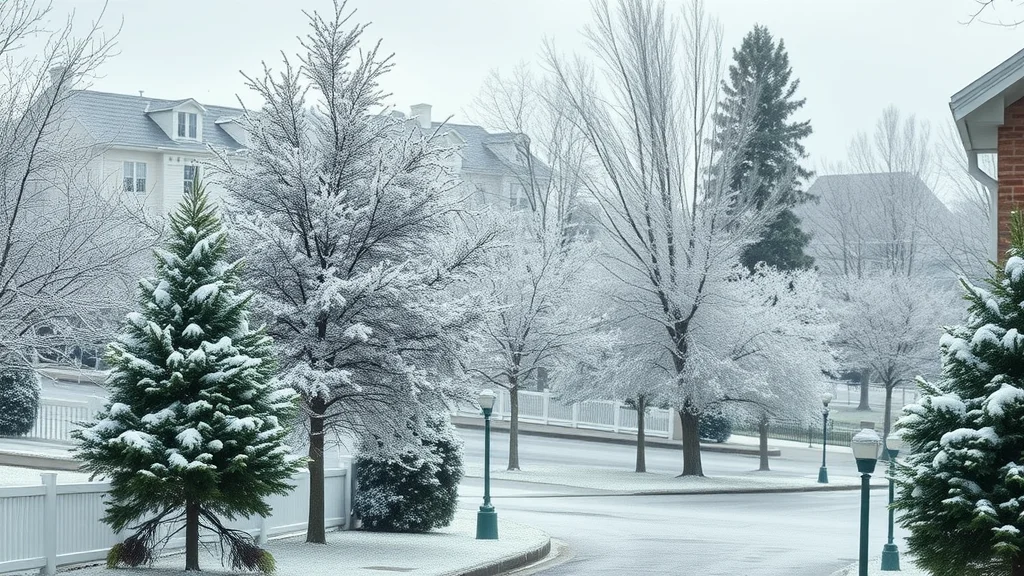Did you know that one in three trees suffers preventable damage every summer due to common maintenance mistakes? Whether you’re an experienced gardener or new to tree care, overlooking crucial summer tree maintenance steps can lead to weakened, unhealthy trees and costly repairs. This comprehensive guide will walk you through the pitfalls to avoid and practical tips you need—so your landscape thrives all season, and you save money in the long run.
One in Three Trees Suffers Preventable Damage During Summer—Discover Why Effective Summer Tree Maintenance Matters
Every summer, homeowners unknowingly risk the health of their trees by underestimating the impact of heat, improper watering, and neglecting key care tips. Summer tree maintenance isn’t just about withstanding the heat—it's about laying the groundwork for trees and shrubs to flourish year-round. When the sun is relentless, and rainfall is unpredictable, tree care becomes a critical aspect of maintaining trees’ health and beauty.
Effective summer tree care means understanding the unique challenges trees face in the summer: increased water evaporation, heat stress, pest invasions, and nutrient loss. Trees in the summer can lose soil moisture rapidly, leading to wilting, dead branches, and even long-term decline if not addressed. By adopting reliable tree care tips and avoiding common mistakes, you ensure your trees stay healthy and your landscape remains vibrant, adding value to your property for years to come.

What homeowners get wrong about summer tree maintenance
- Overwatering vs. underwatering: Many believe more water is always better, but too much water can suffocate roots and cause root rot.
- Ignoring early signs of heat stress: Wilting, scorched leaves, and premature leaf drop are often dismissed until significant damage occurs.
- Delaying necessary tree service: Postponing professional inspections or pruning can lead to irreversible damage and increased risk of pests and disease.
Essential Summer Tree Maintenance to Keep Trees Healthy
Keeping trees healthy in summer requires more than the occasional watering. Proactive maintenance is essential to help trees withstand high temperatures, drought, and pest pressure. Consistent summer tree maintenance helps you catch problems early, improve resilience, and foster growth.
Focusing on the needs of young trees and established ones alike, good tree care during the summer means creating conditions that help retain moisture, regulate soil temperature, and shield against threats. Proper mulching, smart watering, and attentive pest management are the backbone of healthy summer tree care.
Key summer tree care practices for robust trees and shrubs

- Mulching for moisture retention: Apply a 2-3 inch layer of organic mulch, such as wood chips or shredded bark, around the base of the tree. Keep mulch away from the trunk to prevent rot while locking in soil moisture and moderating temperature.
- Correct summer watering techniques: Deep watering with a soaker hose in the early morning encourages deep root growth and reduces evaporation. Avoid shallow, frequent watering, as it keeps roots close to the surface and susceptible to heat stress.
- Protection against pests and disease: Inspect your trees regularly for signs of pests and diseases. Early detection lets you apply targeted treatments or consult a certified arborist before issues spread throughout your landscape.
How Heat Stress Impacts Trees in the Summer—and Practical Tree Care Tips
High temperatures can wreak havoc on both young and mature trees, causing heat stress that weakens their natural defenses. Heat stress manifests as wilting, browning, and curled leaves—especially during long hot spells or dry conditions. Recognizing these symptoms early—and responding with proper summer tree care tips—can be the difference between a thriving canopy and damage to your tree.
Summer tree maintenance should include strategies to reduce stress in trees and shrubs. Watering deeply, applying mulch to retain moisture and lower soil temperature, and providing shade for tender young trees are all vital steps. Well-timed tree service, such as removing dead branches, can further minimize the effects of heat stress and protect overall tree health.
Identifying and managing heat stress with effective summer tree maintenance
- Wilting and leaf scorch: Watch for drooping, curled, or scorched leaf edges—a signal your trees may not be getting enough water or relief from the sun.
- Importance of morning watering: Water trees early in the day to maximize water absorption and reduce the risk of fungal diseases that thrive in humid, overnight conditions.
- Shielding young tree specimens: Use shade cloth, temporary canopies, or even strategic planting to protect sensitive young tree roots and foliage from the harshest midday rays.
"Proper summer tree care can reduce the risk of irreversible damage and increase your landscape's resilience." — Arboriculture Expert

Summer Tree Care Tips: Prevent Pests, Diseases, and Summer Decline
Long, hot summers tend to bring out a surge of pests and diseases that target stressed or weakened trees. Regular inspection is vital since early intervention is easier and less expensive than treating advanced infestations. Implementing the right tree service routines—especially in late spring and early summer—prepares your trees for whatever challenges the hotter months may bring.
Look for irregular leaf coloring, sticky sap trails, or unusual growths, which can indicate early pest activity or fungal infections. A mix of vigilant observation and timely action, like mulching, watering, and occasional professional consultation, ensures your summer tree maintenance is complete and your landscape remains strong and disease-free.
Implementing tree service routines for lasting tree health
- Inspect your trees regularly: Take time to look under leaves, along the trunk, and at the base of the tree for signs of pests and disease.
- Spotting early signs of pests and disease: Pale, mottled, or holey leaves coupled with sticky residue are clues that insects or pathogens are present.
- When to seek professional tree service: Call a certified arborist if infestations are extensive, you notice unexplained dieback, or trees show persistent signs of decline.
Crucial Do’s and Don’ts: Mistakes to Avoid in Summer Tree Maintenance
Even a well-intentioned gardener can inadvertently cause harm when maintaining trees in the summer. Understanding the most common—and expensive— tree care mistakes will help keep your landscape beautiful and your trees healthy for seasons to come.
Overly aggressive pruning during peak heat or failing to water trees’ deep roots can have severe repercussions leading to dead branches, stunted growth, or pest invasions . By learning what not to do—and why—you take a critical step in sound summer tree maintenance.

- Neglecting deep-root watering: Shallow watering encourages weak, surface-level roots and exposes trees to heat stress.
- Over-pruning during peak heat: Removing too much foliage saps the tree’s strength, increases water loss, and may expose bark, making it vulnerable to sunscald and disease.
- Fertilizing at the wrong time: Applying fertilizer during intense heat can burn roots and force weak, stress-prone growth rather than helping trees stay healthy.
| Mistake | Why It's Harmful | Correct Technique |
|---|---|---|
| Overwatering | Root rot, fungi | Scheduled, deep watering |
| Midday fertilizing | Burns, nutrient loss | Late evening application |
| Topping branches | Weak regrowth | Targeted selective cuts |
"A little knowledge saves a lot of trees: proactive summer tree maintenance protects your greatest landscape investment."
People Also Ask About Summer Tree Maintenance
How can you care for your trees in June and July?

- Water early in the day: This minimizes evaporation and supports optimal soil moisture for developing roots.
- Mulch young tree roots: A proper mulch layer maintains temperature and water retention at the base of the tree.
- Watch for pest and heat stress symptoms: Early identification allows you to address issues quickly, preventing pests and disease from spreading to trees and shrubs.
Who is responsible for trees next to power lines?
- Utility companies usually manage tree service near power lines: They have trained professionals to trim or remove trees to prevent outages and safety risks.
- Never attempt DIY pruning near utilities —Hire certified professionals for any work close to electrical lines to avoid serious accidents.
Should you fertilize trees in the summer?
- Only fertilize if soil tests prove a deficiency: Fertilizing without evidence of need can harm tree roots, especially in hot weather.
- Opt for slow-release formulas and avoid fertilizing during extreme heat: This reduces the risk of root burn and supports gradual, healthy growth.
Should trees be pruned in summer?
- Light shaping is safe for some trees with proper summer tree maintenance: Removing small, dead, or crossing branches is acceptable, but limit extensive pruning.
- Major pruning is best reserved for dormant seasons except in emergencies: Too much pruning in summer stresses trees and hinders their ability to stay healthy.
Video Guide: Visual Summer Tree Maintenance Tips for Homeowners
See step-by-step summer tree care: How to mulch, water, and inspect for pests

Gain a clear understanding of the best summer tree care practices with visual demonstrations—from the correct mulching technique to spotting early signs of pests. Watching pros in action offers real-life examples to strengthen your skills and deepen your knowledge about summer tree maintenance.
Look for educational playlist resources online, or seek out in-person gardening workshops. These visual guides help homeowners at all skill levels to care for their trees in the summer confidently, making your landscape more resilient against heat stress and pest problems.
Video Q&A: Arborist Answers on Tree Care for Heat Stress and Pest Prevention
Short expert video dispelling summer tree maintenance misconceptions
Tap into the wisdom of certified arborists through short, focused video Q&As. Topics can include correct summer pruning practices, tips for young tree protection, early warning signs of stress, and how to effectively inspect your trees. These expert-backed video segments clear up confusion and offer actionable solutions for maintaining trees healthy all summer.
Many credible tree care providers and universities publish quick FAQ videos tackling the most common summer tree care questions—making them an accessible and trustworthy resource for continuous learning.
Summer Tree Maintenance FAQ: Expert-Backed Answers
- Which mulch is best for summer tree care? Organic options like wood chips or shredded bark are ideal for summer, as they break down naturally, improve soil structure, and excel at retaining moisture around the tree roots.
- How often should trees be inspected? Inspect your trees at least twice a month during peak summer for signs of pests, diseases, or declining tree health. More frequent checks may be needed after storms or heatwaves.
- When is it best to call for professional tree service? If you notice dead branches, unexplained leaf loss, persistent pest infestation, or structural issues (like leaning or cracking), consult a professional tree service or certified arborist promptly.
Key Learnings from This Comprehensive Look at Summer Tree Maintenance
- Proactive summer tree care prevents costly damage by addressing issues before they escalate.
- Early intervention, like regular inspections and timely watering, keeps trees healthy in the heat.
- Professional guidance from certified arborists ensures the long-term vitality and safety of your landscape trees and shrubs.
"The best time to invest in tree care is before a problem starts. Summer tree maintenance is a must, not a maybe."
Ready to Level Up Your Summer Tree Maintenance Skills?
Grow your landscaping expertise—call 203-271-7991 or visit TreeGuardianNews.com to subscribe.
Take action today: Integrate these summer tree maintenance strategies, keep a watchful eye on your landscape, and don’t hesitate to enlist professional help for your trees’ health and longevity.
To enhance your understanding of effective summer tree maintenance, consider exploring the following resources:
-
“Summer Tree Care Tips” : This article provides practical advice on deep watering, mulching, pruning, and inspecting tree health during the summer months. ( canopy.org )
-
“Summer Pruning Do’s and Don’ts: Maintaining Tree Health and Shape” : This guide outlines best practices for summer pruning, including selective pruning techniques and the importance of proper tool sanitation. ( utahtreeco.com )
By consulting these resources, you can gain valuable insights into maintaining healthy trees throughout the summer season.
 Add Row
Add Row  Add
Add 




Write A Comment